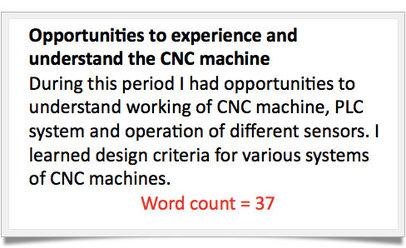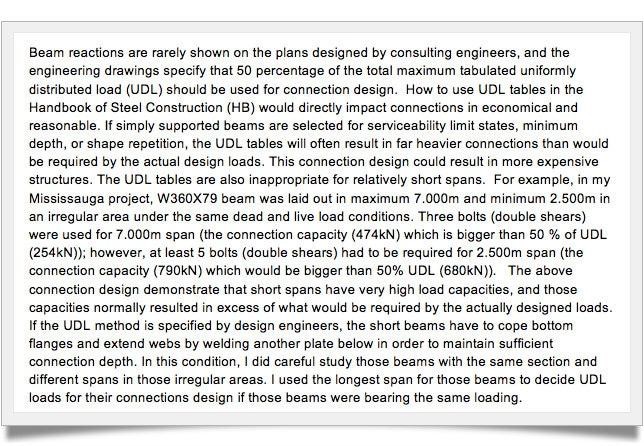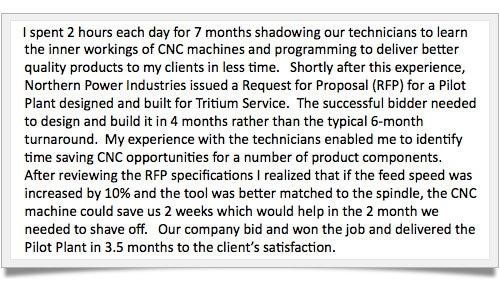PEO’s Work Experience Record
How may we help you to complete your PEO’s Work Experience Record?
An applicant applying for PEO’s Work Experience record must show that they have at least 48 months of verifiable, acceptable engineering experience after receiving their undergraduate engineering degree in order to be granted a license.
The professional engineer (P.Eng.) certification PEO’s in Canada stand for the nation's highest standards of engineering expertise, knowledge, and professionalism. We at Global Immigration Help provide premium, top-rated, and highly experienced experts to assist with your PEO’s Experience record with the assurance of guaranteed success. We assist in completing all 5 elements of PEO’s engineering experience record with perfection. Below are the 5 elements.
Application of Theory: Design, analysis, synthesis, devising testing methods, and implementation methods.
Practical Experience: Function of components as a part of a larger system and, limits of practical engineering, the significance of time in the process of engineering, knowledge, and understanding of codes, standards, laws, and regulations.
Management of Engineering: Scheduling, planning, budgeting, project control, risk assessment, and supervision.
Communication Skills: Oral presentations, written work, and presentations to the general public.
Social Implications of Engineering: Determining the benefits or value of the engineering work to the public, putting appropriate safeguards in place, the relationship between the engineering activity and the public, and the role of regulatory agencies.
All of the above-mentioned factors are taken into consideration when evaluating the final Experience Record and the application for licensure. The simple passage of time is not enough; the quality of the experience is very important.
How to Create Your PEO’s Experience Record
To assist with the PEO review and help you in ensuring that your Experience Record offers adequate information, it is suggested that your Record be prepared in the way given below:
- Complete the Experience Record Form (including the company name, location and employment dates, month and year). Periods of absence from work (travelling, unemployed) must be listed with dates; and
- For each position about which you are reporting, give us a small paragraph in which you need to describe your job responsibilities highlighting the engineering duties; and
- Describe how the work experience earned in that position fulfills each of the five criteria (application of theory, management of engineering, practical experience, communication skills and knowledge of the social implications of engineering).
When describing your engineering activities:
- Highlight what you did, as it is related to each of the five engineering criteria. Structure the description to include not only what you did, but the way you did / How you did it, and the reason behind doing it means Why you did it. You may use this format: ‘I did.. using….in order to..'
- Be specific about your work as opposed to the work of the team. For instance, ‘I determined the heat load..’.
- Provide sufficient and clear information on the complexity of the situation.
All of the above-noted factors are taken into account when assessing the final Experience Record and the application for licensure. The simple passage of time is not sufficient; the quality of the experience is very important.
The PEO's requirements for Engineering work experience
According to Ontario law, obtaining a professional engineering license requires four years of engineering work experience. You must have acquired at least one year of experience in a Canadian jurisdiction. By doing this, you can be sure that you have had enough exposure to Canadian engineering laws, rules, and regulations.
PEO assesses each applicant's engineering experience based on five standards of excellence:
- Application of Theory
- Practical knowledge
- Management of engineering
- Communication skills
- Social implications of engineering
An applicant must show that they have at least 48 months of verifiable, acceptable engineering experience after receiving their undergraduate engineering degree in order to be granted a license.
How to List Experience in Engineering?
- Guide to the Experience Requirements for Professional Engineer Licensing in Ontario
- Guide and Form for Engineering Experience Records (Word)
- Summary of Experience Page (Word)
- References with experience (Word)
The aforementioned forms are included at the bottom of the page.
Requirements for obtaining engineering job experience to become a professional engineer
The professional engineer (P.Eng.) certification in Canada stands for the nation's highest standards of engineering expertise, knowledge, and professionalism.
Candidates who meet the criteria outlined in this Experience Requirements Guide will have demonstrated their capacity to use good engineering judgment, work well in interdisciplinary teams, and communicate effectively both within their workplace and with the general public. To ensure sustained competence as a professional engineer is maintained, the experience that has been acquired should only be seen as the first step in a lifelong process of continuous learning.
Conditions for Registration
A P.Eng. license applicant must meet the following requirements:
- Be at least 18 years old.
- Be morally upright.
- To the academic standard
- Achieve the experience requirements
- Qualify the National Professional Practice Exam
An applicant must show they have at least 48 months of verifiable, acceptable engineering work experience after receiving their undergraduate engineering degree in order to be granted a licence.
PEO assesses each applicant's engineering experience based on five standards of excellence
- The use of theory
- Practical knowledge
- Engineering management
- Abilities in communication
- And Understanding of the social effects of engineering
How to List Experience in Engineering?
- Guide to the Experience Requirements for Professional Engineer Licensing in Ontario
- Guide and Form for Engineering Experience Records (Word)
- Summary of Experience Page (Word)
- References with experience (Word)
The aforementioned forms are included at the bottom of the page.
Example Of Finding The Proper Length For Each Project
An Experience Record: What Is It Really?
You can demonstrate your engineering work experience by looking at the numerous project samples.
Scale:
5–6 for Theory Application
4 to 6 for Real-World Experience
3–4 in favour of Engineering Management
2-3 for Communications Skills
2-3 in terms of understanding how engineering affects society
- Why do I think the first two competencies benefit from having more examples? In light of the fact that PEO gives these more weight (see page 6 - section 2.2), it makes sense to provide more examples illustrating how you've met the expectation.
- Now let's delve a bit more into the project examples. You'll have roughly 17 to 22 examples for each employer. You may have only worked on one significant project for one employer. Fine, that. The challenges and situations in your examples 17 and 22 are merely ones that you resolved. Stage-by-stage break up the broader project(s), and then describe your contributions in detail.
To satisfy the reviewer, you want to ensure that each circumstance is the suitable length and has the pertinent details. When you adhere to the WWHO formula discussed on Day 1, the correct information is obtained.
I'll use the classic tale Goldilocks and the Three Bears as an analogy to help you calculate the ideal length. In essence, Goldilocks is a young blonde girl who finds this house while out roaming in the forest. She intrudes and sets up residence. She notices that the first bowl of porridge on the table is "too hot," the second is "too chilly," and the third is "just right." She takes a nap after finishing her meal since she is exhausted.Each of the first two beds is "too short," "too lengthy," and "just right."
- Your objective is to find the ideal length for each case.
- Let's examine a real-world instance that is "too brief."

You can see that we have a word count of 37. The formula for WWHO, which stands for What You've Done, Why You've Done It, How You Did It, and the Outcome, cannot be explained in 37 words.
I get the feeling from little samples like the one above that the candidate achieved nothing noteworthy. This is not where you want to find yourself.
Now Here is one that is simply ‘too long’.

The great majority of lengthy examples, like the 304-word project example above, suffer the following issues: They are unconscious, contain definitions and irrelevant details, and dull the reader.
Keep in mind that PEO reviewers are unpaid volunteers. Make your application brief and targeted to your contributions because they don't want to spend the entire weekend reading it. Please, no definitions or jargon.
Here is an illustration that, in my opinion, is "exactly right."

The example given above has 156 words. I've discovered that the optimum word range to effectively explain one example is between 150 and 200 words after going through dozens of experience records from aspiring engineers (for Application of Theory and Practical Experience - 100 to 150 for the other 3 competencies). You might be omitting something if it's shorter. If it is lengthier, you might be combining two separate scenarios.
Note how the aforementioned illustration exactly captures the WWHO formula. Examining each component in turn
What - I worked with technicians for seven months.
Why? - To better serve my clients by understanding how CNC machines operate.
How (issue + solution) - Applied engineering process expertise to modify a machine to shorten the fabrication process.
Result - We were successful in the RFP and delivered on schedule to the client's satisfaction.
When you adhere to the WWHO formula and make sure that each example is between 100 and 150 or 150 and 200 words, good things happen.
PEO has established a new, entirely online P.Eng. application process on the PEO portal as of July 11, 2022. This new digital application system fits with our ongoing enterprise-wide
transformation and represents a significant advancement in modernizing PEO's license application process.
To access the PEO site, new applicants will need to create an account. After creating an account, you may log in and access the application tab to begin the P.Eng. license process.
If you require any additional details, do not hesitate to contact us or reply to this message for prompt assistance from our professionals.
We at www.Globalimmigrationhelp.com have a very highly professional team of native engineers from Canada and we assure of the well-structured and professional Work Experience Record. It would be 100% Plagiarism free and we will share Plagiarism reports as proof. Our professionals/writers are well qualified and ensure 100% positive outcomes. After report submission, if you get comments for corrections/Modification, it would be handled by us free of cost.
Should you need any further information, please do not hesitate to Reply back/contact us for quick support from our experts at: contact@globalimmigrationhelp.com
WhatsApp - +44-7380-308144





